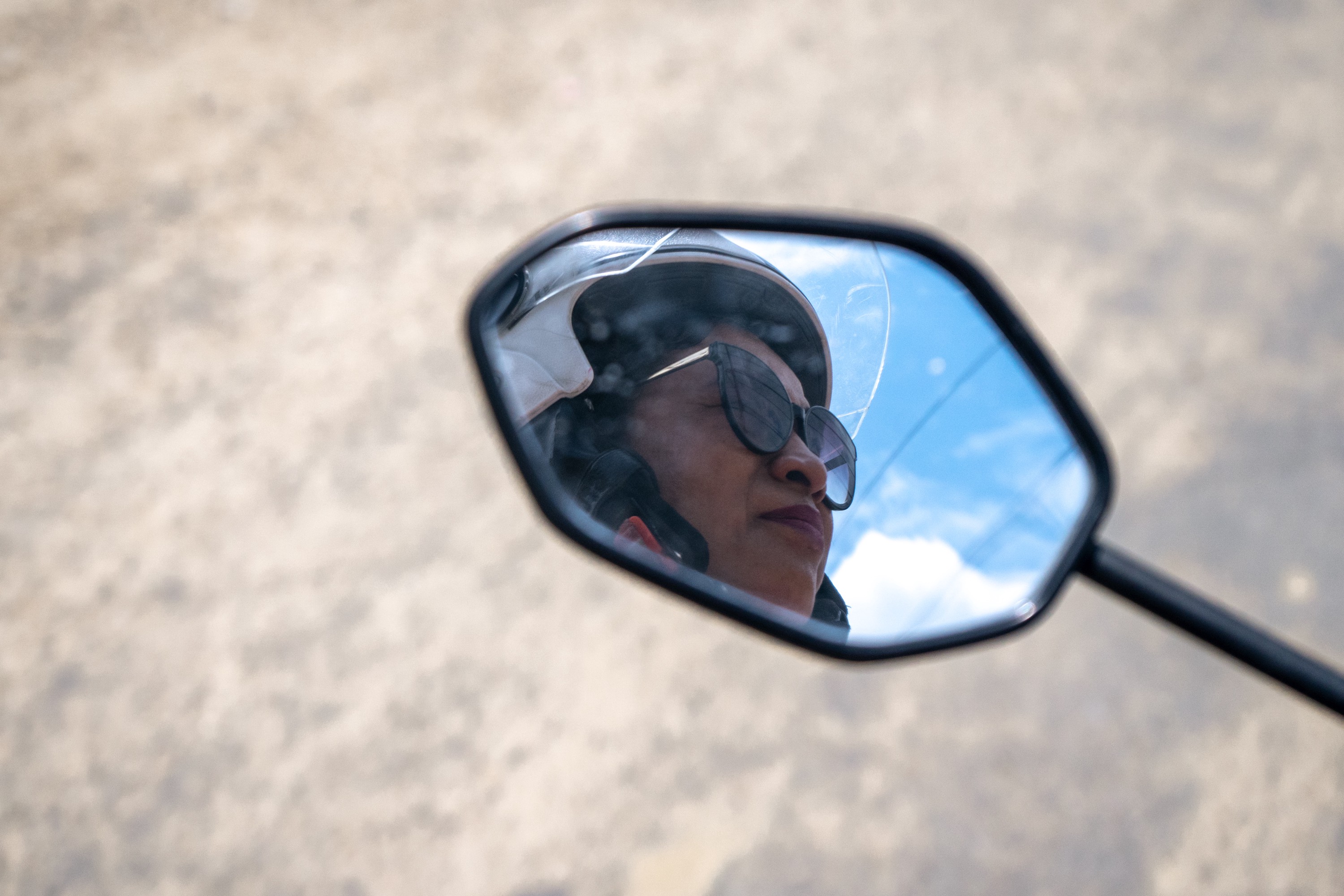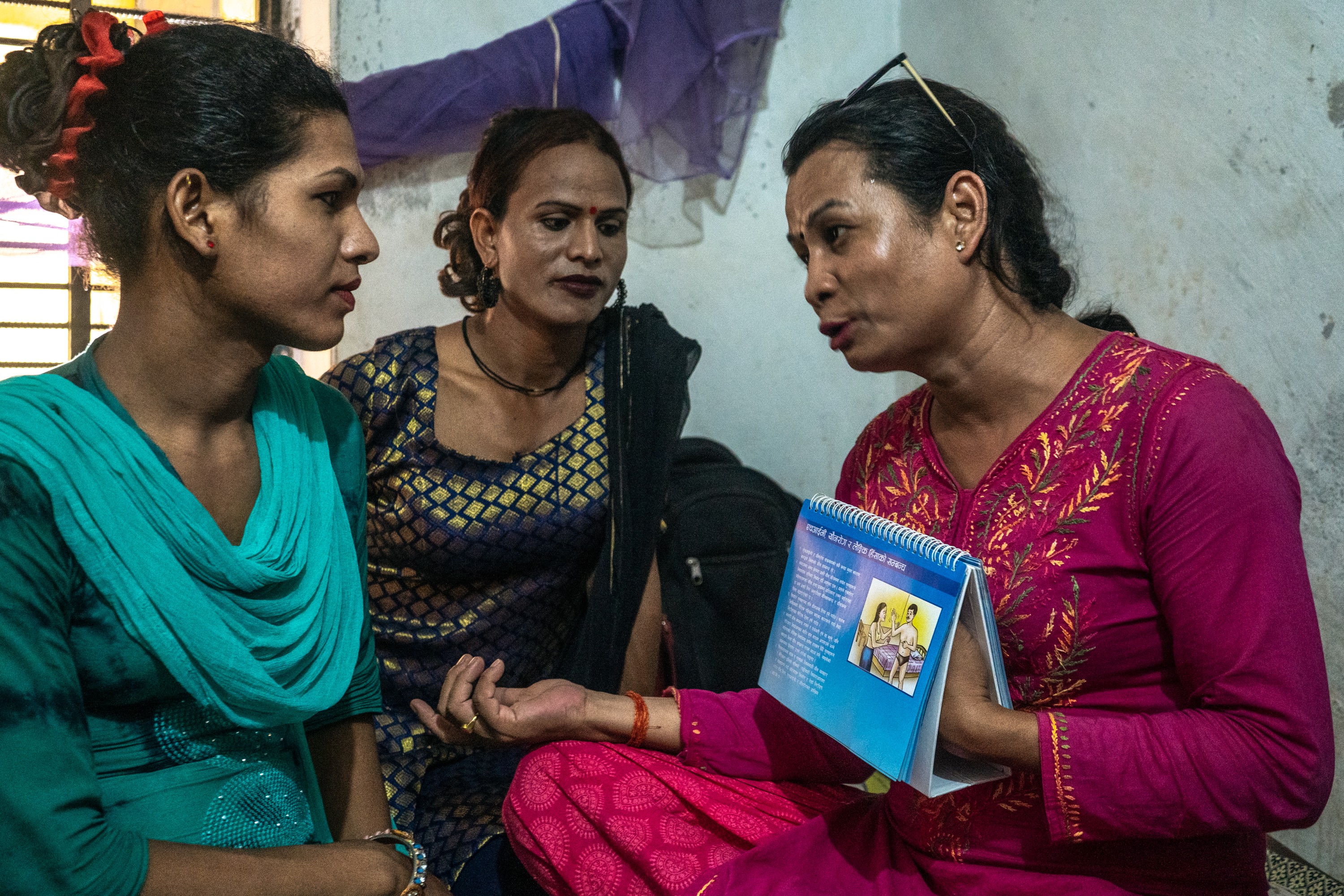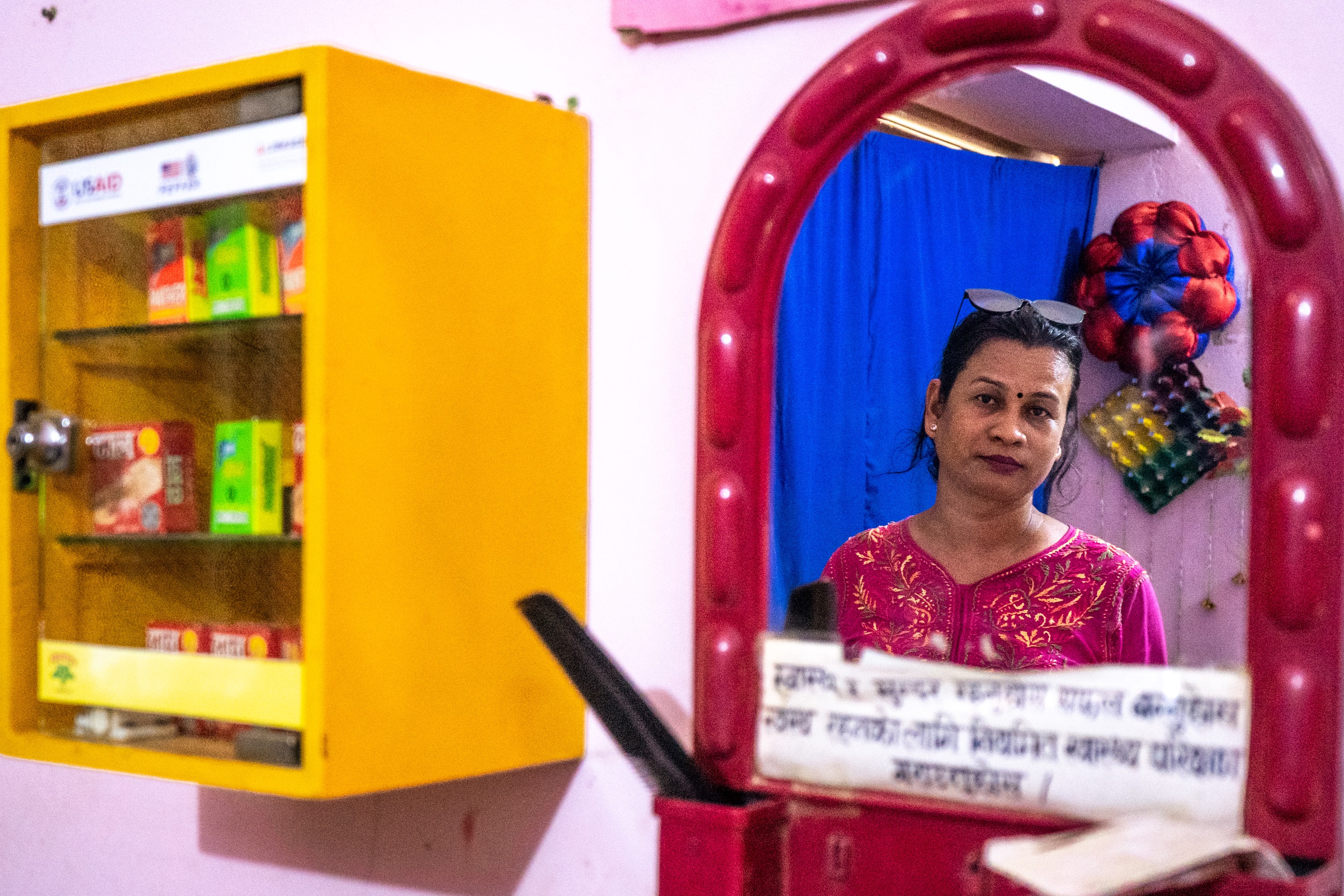Pamala Horugavye, Former Senior Development Outreach & Communication Specialist, USAID Mission, Nepal
This blog post was originally published here on USAID Medium.

If participants in her home-based classes are reluctant to test for HIV at home, Pareena Chaudhary provides transport on her motorcycle to an HIV test center, where they also get personal counselling. (Bijay Gajmer/USAID)
Early in life, Pareena Chaudhary — a 40-year-old transgender woman from Nepalgunj, Nepal — struggled with her identity and her family’s lack of acceptance. From a young age, she loved putting on girls’ dresses and jewelry. However, her family members were disheartened. They didn’t understand her girlish attitude and demeanor.
“You may do whatever you like inside closed doors, but do not carry it outside,” her four brothers and mother frequently warned.
While Pareena was very conscious of the troubles she triggered at home, it was not possible for her to suppress herself all of the time.
“I did not want to be a laughingstock. So I would try to control the natural moves of my hands, my body, my behaviors,” said Pareena. “I would struggle to look and behave like a macho man.”
Her life became even more challenging when she joined a new school in eighth grade. It was hard for her to face new people.
That kind of inner battle continued until 2002, when Pareena joined the Blue Diamond Society’s Kathmandu Chapter, which was established in 2001 to advocate for change in existing laws against homosexuality and promote the rights of marginalized sexual minority groups. Connecting with the oldest LGBTI organization in Nepal enabled her to build her self esteem and appreciate her own individuality, and eventually lead her to partner with USAID to further her advocacy.

With USAID support, Pareena teaches LGBTI individuals about safe sex, inspires them to develop income generating skills, and encourages them to lead independent lives. (Bijay Gajmer/USAID)
“Wow,” she thought back then, “there are people like me!”
While the constitution of Nepal guarantees equal rights and opportunities for all Nepalis irrespective of gender, the LGBTI community in Nepal has yet to experience this promised equality. Because of this, many LGBTI individuals do not access HIV treatment, even though there were an estimated 30,000 people living with HIV in Nepal in 2018 — many of them from the vulnerable LGBTI community.
“I knew the discrimination against us must crumble,” she said.
While Pareena grew up shy, her advocacy transformed her into an effective agent of change. She first worked as a peer educator, but gradually assumed higher posts as her confidence and abilities grew.
“To speak for it (the LGBTI movement), I needed to work tremendously on my personality — my social dignity,” she said. “And I did. But the battle was never easy, and it is not easy.”
In 2006, Pareena was selected to lead a new branch of the society in her hometown. In that role, she not only led the chapter, but worked with key contacts within the region to raise awareness about the LGBTI community.
The issues are serious, including a lack of access to health care and limited job opportunities. Abandoned by families at an early age and unprotected by the system, many pursue sex work early in life.
“But they lack awareness and even tools for safe sex,” reports Pareena. “It is very dangerous.”
Tackling these challenges became Pareena’s life mission.

Pareena takes a third gender sex worker to an HIV testing center. (Bijay Gajmer/USAID)
Her efforts gained momentum after she connected with USAID’s LINKAGES Project. “LINKAGES began to support us, and we could take our campaign entirely to the next level,” she said. “Many more lives have been saved, changed, touched.”
USAID supported HIV programming in Nepal for more than 20 years. LINKAGES began in 2015 and promotes the health and well-being of LGBTI people in Nepal. Eleven out of 20 LINKAGES’ partners are led by people from key populations or people living with HIV/AIDS.
Through LINKAGES, Pareena teaches LGBTI people about safe sex, inspires them to develop income generating skills, and encourages them to lead independent lives. The most vulnerable in the community also get medical assistance to prevent and treat sexually transmitted diseases, including HIV. The LINKAGES outreach team — often led by Pareena herself — reaches every nook, corner, and dark alley of the city.
She also visits homes of third gender and transgender individuals to educate them about safe sex and offers home-based clients transport to the HIV test center, where they can be tested and also get personal counselling.
According to Sonakshi Tharu and Roshni Tharu, both transgender individuals, Pareena is not Pareena but Pari (angel in Nepali) who changes lives. If she had not been there to support and teach them, they say they would have experienced multiple problems in their lives.
“We had simply no idea about safe sex. She (Pareena) taught us everything,” said Sonakshi. “She is our leader.”
Overall, Pareena’s work in the community and good rapport with local organizations and government authorities have helped to create a safer environment for the LGBTI community in Nepalgunj.
“Many LGBTI people here are aware of their health status now,” Sonakshi added. “We feel so safe and empowered to come under her fold.”
Pareena is passionate about her job.
“It’s about healing,” she said. “I feel I am a counselor — a healer to them more than anything. This makes me love my work — my life.”

Bijay Gajmer/USAID
In 1993, USAID pioneered the first project in Nepal to address the rising HIV and sexually transmitted infections epidemic. Nearly three decades later, USAID’s programs have distributed 121 million condoms; reached 1.3 million individuals with HIV prevention messages; trained over 117,000 individuals to reduce HIV-related stigma and discrimination in health care; and helped over 361,000 individuals test for HIV. Thanks in part to USAID’s long standing history of supporting Nepal’s health priorities, new HIV infections dropped by 58 percent, and AIDS-related deaths dropped by 36 percent between 2010 and 2018. With a healthier population, Nepal is moving forward on its journey to self-reliance.
